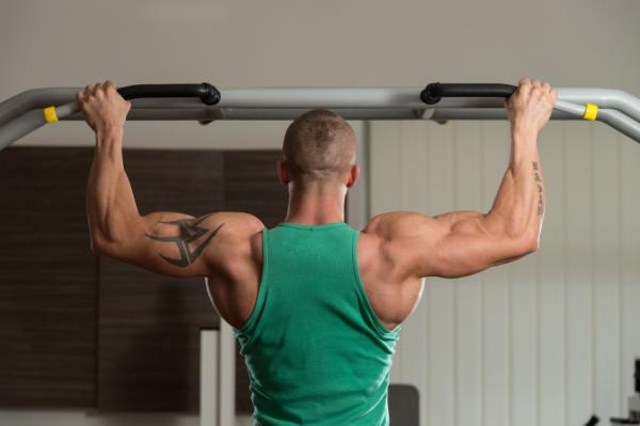Fixed bar exercises are known not only for their simplicity in execution. But also because of their age. Despite its antiquity, rather than becoming obsolete, it is in modern times where it has had the greatest development and presence. Well, it has been proven that they turn out to be incredibly beneficial in many aspects, especially if there is perseverance on the part of the user.

Keep in mind that the key to fixed bar exercises is being able to lift your own weight with your arms. In this way it is possible to develop strength and resistance in the upper part of our body, achieving in the process to tone the muscles. Which is why those known as “Pro Barras” have such ripped muscles. Despite not standing out precisely because of his muscle mass.
The only requirement to do this type of exercise is to have a fixed horizontal bar. Very firm to the base to which this soldier or assures, and eager to train. We can usually find them in training parks or we can buy ours and install it on a wall in the home. Of course, this bar must be placed at a certain height, which allows us to perform the constant movement of these exercises, which is basically raising and lowering our body with our arms. If we have everything we need, then we can start with the training, let’s go!
What muscles are worked when performing horizontal bar exercises?
Although today there are many exercises that can be done with a fixed bar. And even some dedicated exclusively to the work of a certain muscle. We will comment on which are the muscles that are mostly worked when performing a body lift on the horizontal bar.
In this type of exercises, we can give work to:
- The latissimus dorsi. Which is the middle and lateral part of the back.
- The forearms.
- Both biceps.
- The rhomboid. They are those core muscles in the back.
- the trapeze Being more precise the lower part of the trapezius.
Those are the muscles of both the back and the arms that are worked when doing horizontal bar exercises.
It is worth mentioning that this type of exercise considerably improves the user’s performance in those sports that require strength. Mainly in the upper part of the body, such as swimming, baseball, climbing, boxing and of course tennis. So if you practice any of the sports mentioned and you are looking to gain greater strength and muscular endurance. The recommendation is clear, perform fixed bar exercises to achieve that boost in your body.
Of course, to be able to exercise without fear of tearing a muscle or suffering a similar injury. It is important to warm up before doing any exercise. The reason is simple; these high bar exercises are mostly tension exercises. While your muscles lift a weight (in this case your body). With perseverance you will realize that your leather will no longer represent a considerable weight.
Work your muscles with tension.
In the previous point it was commented superficially that the fixed bar exercises should be worked with tension. Because over time the weight of your body will become an “easy” weight to lift. That is when the tension is present to compensate for the absence of weight to gain strength.
Whenever tension is applied in exercise, it generally benefits not only by increasing muscle endurance, but also by toning the muscle. To achieve this, you should only train slowly and calmly, doing gentle elevations and descents. Thus, the muscle is subjected to a certain pressure. Thus achieving good muscle tension and you will see how the work intensifies a lot.
It is a common mistake to fall into the temptation of doing several repetitions, but the truth is that the number of repetitions does not matter, but the quality of them. And the best way to evaluate the quality of an exercise is through muscle wear or fatigue. If after performing your fixed bar exercise routine, you don’t feel the work in your muscles. I’m afraid you didn’t get the exercise right.
Without more to contribute to this entry, with what has already been explained here you will be able to get not only a good base from which to start. But now you know that it is the most basic of fixed bar exercises.
